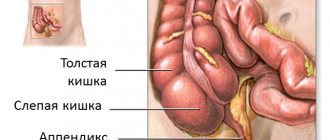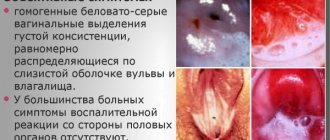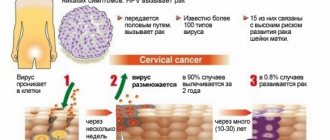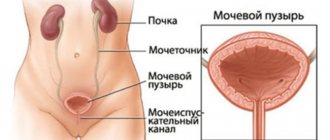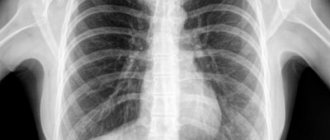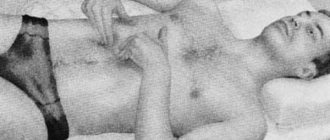Premenopause is the very first stage of menopause, when irreversible hormonal changes begin in a woman’s body. The duration of this period is purely individual and can range from 2 to 10 years. The normal premenopausal age is 40-50 years. Let's take a closer look at how long this stage lasts, how to recognize the onset of menopause, how menstruation occurs during premenopause, and what to do if unpleasant symptoms appear.
How does it all start and how do menstruation happen?
Perimenopause is the beginning of age-related change that leads to the end of the reproductive function. The first stage of menopause comes unnoticed. Last month a woman might have had normal periods, but suddenly they don’t come on time. The delay period can range from several days to several weeks. At this stage, not many patients immediately understand that menopause is just around the corner. They attribute the delay to fatigue or stress, but nature is merciless and after the first delay, a second will invariably follow.
At the same time, menstruation can be both abundant and scanty. The greatest danger is excessive bleeding. They are not always menstruation and may indicate the presence of certain pathologies, such as endometriosis, fibroids, etc.
However, failure of the menstrual cycle is not the only sign of the initial stage of menopause. During the premenopausal period, symptoms can be quite varied. First of all, patients begin to notice the instability of the emotional background. Suddenly, when everything seems to be fine, tears begin to roll in, or anger and irritability arise over any trifle. These emotions arise as a result of hormonal imbalance, which develops against the background of ovarian depletion.
Changes in appearance can also signal the approach of menopause. Hair begins to fall out, nails peel, and new wrinkles appear. In addition, one of the main signs of menostasis is weight gain. It becomes more difficult for a woman to maintain her usual weight; ridges on her sides and fat deposits on her hips and abdomen begin to appear.
Important! Symptoms and signs of premenopause may be similar to those of dangerous pathologies, so at the first deviations it is important to visit a doctor.
At what age does it start and how long does it last?
As noted above, the age of a woman when her reproductive function fades can be quite different. Such symptoms are not too obvious and may be signs of other diseases or stress. Postmenopause in medicine is considered the period of time that begins from the end of a woman’s last menstruation, in the absence of them for a year or more.
The normal age for postmenopause is 45 years. It can occur at an earlier age due to genetic characteristics or hormonal imbalances, but this happens quite rarely. For some diseases, doctors are forced to artificially stop menstruation.
Postmenopause in women is the last stage of transition, preceded by menopause and premenopause. The average age of postmenopause is 51 years.
How long does postmenopause last? - Until the end of life - this is the final stage.
How to notice the onset of premenopause?
In fact, noticing the approach of menopause is not so difficult. Patients who regularly visit a gynecologist never suddenly encounter this problem. At regular examinations, the doctor evaluates the functioning of the ovaries and, if the onset of menopause is suspected, prescribes hormone tests.
However, observant patients themselves can notice that changes are occurring in their body. The following are the symptoms of premenopause:
- Menstruation in premenopause. Most often, periods come with a delay, but there are cases when the cycle, on the contrary, is shortened. In order to notice this, it is recommended to keep a menstruation calendar, which will immediately show any disruptions.
- Changes in the amount of blood during menstruation. Just like with a cycle, the amount of blood can change either up or down. At the same time, menstruation during the first stage of menopause almost always becomes painful and unpleasant.
- Swelling and heaviness in the chest. The female breast is a hormone-dependent organ. It reacts to any changes in hormonal levels. Therefore, during the premenopausal period, the breasts begin to ache and swell, sometimes regardless of the menstrual cycle.
- Hormonal instability. Negative emotions appear for no apparent reason. The patient may feel anxious, insecure, want to cry or make a scandal. It is worth paying attention to emotions at the moment when positive feelings are replaced by negative ones. Perimenopause is the time when depression develops.
- Decreased libido. As soon as a woman feels that sex has ceased to be interesting for her, she should undergo a hormone examination. If hormone levels are not adjusted in time, the vaginal mucosa will become thinner and sexual intercourse will cause pain.
- Sleep disturbance and decreased performance. These phenomena are associated with disorders of the central nervous system. Lack of proper rest leads to fatigue, decreased concentration and memory impairment.
- The appearance of tides. This sign cannot be confused with other ailments. Sudden attacks of fever with increased sweating are the most severe symptom of menopause.
Important! Premenopausal symptoms may manifest differently in women. If one or more symptoms are present, this is a reason to contact a gynecologist.
Uterine bleeding in premenopause
Due to hormonal imbalance, 30% of patients at the initial stage of menopause experience uterine bleeding. During this period, when menstruation is not stable, it is very difficult to notice bleeding. Most often, ladies confuse them with menstruation during the first stage of menostasis. Dysfunctional bleeding can be determined by the nature of menstruation. If there is a deviation, there is a large loss of blood that lasts more than 7 days. The danger of such bleeding lies in the development of anemia and other dangerous pathologies.
Long periods in premenostasis require examination and treatment. The choice of therapy depends on the causes of the deviation. It is very important at this moment to diagnose uterine bleeding and treat it in a timely manner, because untimely treatment can lead to the development of oncology of the body and cervix.
Read
The influence of menopause on a woman’s mental state
How long does premenopause last?
What is premenopause in women? This is a period of complete restructuring of the body to work in a mode of reduced levels of sex hormones, and this restructuring takes time.
The premenopausal period can last from 2 to 10 years. The duration of this time depends on the individual characteristics of the body. At the same time, unpleasant symptoms may persist throughout the entire period of premenopause. If the manifestations are too intense and prolonged, the patient needs the help of a doctor.
Treatment of symptoms and medications
The treatment regimen for uterine bleeding after menopause is prescribed by a doctor based on the reasons that caused it. If these are extragenital pathologies, the underlying disease is subject to treatment. For dysfunctions of the genitourinary and reproductive systems, a course of drug therapy is prescribed, but in some cases urgent and surgical interventions may be necessary.
If there is sudden heavy bleeding, emergency treatment may be needed. She usually ends up in an inpatient setting.
- If the doctor suspects an intrauterine pathology, he performs an emergency hysteroscopy. If polyps and other growths are found in the endometrial cavity, they are resected.
- If the cause of bleeding is hyperplasia, an endoscopic operation to curettage the uterus is performed.
- If a clinical gynecological examination reveals the absence of organic causes, hemostatic therapy is used.
This is followed by further examination of the body in a stationary mode.
Subsequent treatment directly depends on the abnormality that caused the bleeding. In medical practice, hormone replacement therapy is most often used to restore the balance of progesterone and estrogen. If any neoplasms or tumors occur, they are often eliminated through surgery.
If there are concomitant diseases of the thyroid gland and internal organs, the patient is prescribed a course of drug therapy and a special diet (especially for hypothyroidism and hyperthyroidism). Often, the doctor prescribes corrective therapy with multivitamin complexes. Oncological diseases are cured by surgical resection of the tumor; if necessary, treatment continues with chemotherapy and radiation therapy.
When experiencing uterine bleeding during menopause, a woman needs to understand that this symptom is extremely specific, and in some cases only it can signal the presence of oncology. Therefore, timely seeking qualified help in this case is simply necessary.
The period of menopause is a complete restructuring of the body due to its hormonal instability. Many women say that menopause is very difficult to endure, almost impossible, that this period is filled with nervous breakdowns, worries and poor health. However, statistics stubbornly prove the opposite.
When you haven’t had your period for exactly a year or more, you can say that menopause has arrived.
Uterine bleeding can be divided according to the principle of its occurrence:
- Diseases of the female reproductive system. If menstruation began more than six months after its expected end, then this indicates an inflammatory process in the organs of the reproductive system: the uterus, ovaries, vagina, fallopian tubes, cervix, etc.
- There are such bleedings, the occurrence of which is to blame for hormones, or rather disruptions in hormonal balance. The lack of female sex hormones causes atrophic processes in the organs of the reproductive system. This causes bleeding, but they cannot be confused with menstruation, because they differ significantly in consistency, quantity, and color.
- Some bleeding may occur as a side effect of certain hormone-based medications.
- Uterine bleeding can be caused by hormone therapy, which was originally used to relieve the symptoms of menopause in cases where a woman has complications with menopause. By the way, this type of bleeding is not at all as scary as it might seem at first. It also has a right to exist during menopause. This suggests that the cycle has been restored and will appear as regularly as during reproductive age. This type of discharge will be somewhat different from menstruation in the usual sense. There will be little discharge, there will be no clots. A woman will experience this condition every month for 3-4 days, and usually it goes away easily, without any noticeable complications.
- Bleeding may be caused by disturbances not only in the functioning of the reproductive system, but also in the internal organs. Such disorders include cirrhosis of the liver, pathologies in the thyroid gland and some other conditions.
In addition, you need to find the reason that provokes these bleedings. To do this, you need to undergo diagnostic procedures.
In addition to the basic medications to maintain a woman’s health, the following medications are prescribed, which must be taken over a long period of time:
- Amymocaproic acid.
- Drugs that reduce the permeability of vascular walls.
- Drugs that affect prothrombin synthesis.
- Calcium gluconate, which serves to strengthen the walls of blood vessels.
- Mix mistletoe, shepherd's purse grass, yarrow, crooked bread root, viburnum root, horsetail root, meadowsweet flowers, dried nettle. Brew with boiling water, let it brew and take half a glass half an hour before meals three times a day.
- Mix silver cinquefoil, bergenia root, snake knotweed, arnica, hawthorn fruit, sandy immortelle, rose hips. Pour boiling water over and cool. Drink instead of tea for a month.
- Mix plantain, shepherd's purse, geranium herb, bird cherry fruits, blueberry leaves. Pour boiling water and drink half a glass three times a day, regardless of meals.
Changes in the physical condition of a woman during premenopause are quite large. But if you begin to be embarrassed by heavy or too long periods, you should immediately seek help from a doctor. Some dosage forms come to the rescue in preventing undesirable consequences:
- hormonal pills (oral contraceptives);
- phytohormones, if hormonal drugs are contraindicated for a woman;
- intravaginal products with estrogens;
- hemostatic agents: prescribed only because of long and heavy periods;
- herbal preparations;
- vitamins for women.
Remember! Never self-medicate, otherwise you may cause irreparable harm to your health.
If you carefully monitor how changes in discharge manifest themselves during premenopause, then entering menopause will be subtle and successful.
Treatment is aimed at reducing the severity of unpleasant symptoms of the onset of menopause and preventing possible potential risks. The use of hormonal agents is pathogenetically justified, but in mild cases nonspecific treatment without drugs is possible.
Non-drug methods
With mild severity of menopausal syndrome, a woman is recommended to follow a daily routine. For proper rest, 7-8 hours of sleep is necessary. To increase tone, physical activity and general strengthening activities are important. Some people find that wiping with cold water, hardening procedures, and contrast showers help.
Nutrition correction is required. If you are prone to high blood pressure, limit your salt intake. It is recommended to reduce the amount of animal fats; preference is given to plant foods, cereals, and fermented milk products. Sweets, fatty foods, and starchy foods lead to excess weight gain and worsening premenopausal symptoms and metabolic disorders. Quitting smoking and drinking alcohol is mandatory. For mild depressive disorders during premenopause, individual or group psychotherapy helps; the support of loved ones, relatives, and spouse is important.
Conservative therapy
Hormone replacement therapy (HRT) is prescribed for moderate and severe premenopause; it is started at any age when the first signs of pathology appear. The drugs are selected individually in the absence of contraindications such as a tendency to thrombosis or diseases of the cardiovascular system. Hormonal drugs are prohibited if there is a suspicion of malignant tumors of the mammary glands or reproductive organs, uterine bleeding of unknown origin, or acute liver pathologies. The following groups of drugs are used for HRT:
- Combined estrogen-progestogen agents. In young women, monophasic or triphasic oral contraceptives are used, and after 50 years, drugs based on natural estrogens with the inclusion of a gestagen component are used. Premenopausal women are prescribed estradiol valerate in combination with cyproterone acetate, levonorgestrel, nogestrel, medroxyprogesterone.
- Gestagens. Recommended for women with uterine fibroids, endometriosis and other contraindications to estrogen. Dydrogesterone and micronized progesterone preparations can be used orally cyclically from days 5 to 25 of the cycle. An intrauterine system with levonogrestrel, which is installed once every 5 years, is effective.
- Pure estrogens. They are used when the uterus has been removed, since there is no risk of developing proliferative processes that can develop into endometrial hyperplasia or cancer. Estradiol tablets, a hormonal patch or gel are used for application to the skin.
- Phytohormones. In case of absolute contraindications to HRT or a woman’s refusal, ready-made extracts of the plants of Circimfuga, Melbrosia, Raponticin, which contain phytoestrogens, are used. These include isoflavonoids, lignans, and coumestans. They have an estrogen-like effect, but this occurs with long-term use.
Premenopause and pregnancy
Many patients are interested in whether it is possible to get pregnant in the first stage of menopause. Often women, when their periods fail, refuse protection. They believe that with the onset of this stage, pregnancy is no longer possible. However, it is not uncommon for an unplanned pregnancy to be discovered at a doctor’s appointment. Such a late pregnancy, of course, causes a lot of trouble. Many decide to abort it, and those who leave the child experience enormous stress, because it is already very difficult for the body to bear a healthy baby.
The probability of fertilization in the initial stage of menostasis is lower than at a young age, but this does not exclude the risks of becoming a mother in old age. History knows many cases when women gave birth even after 50 years of age. It is also important to know that premenopause increases the risk of ectopic pregnancy. Therefore, under no circumstances give up contraception until your periods have completely stopped and menopause has been diagnosed.
Important! It is impossible to get pregnant only after the complete cessation of menstruation during menopause and postmenopause. At an early stage of menopause, pregnancy is possible!
How to recognize the onset of menopause
Unfortunately, menostasis (that is, menopause) does not pass without leaving a trace; most women feel unpleasant physiological sensations.
For example:
- Tides. One of the most common and unpleasant signs of the onset of menopause is accompanied by a sudden onset of a feeling of heat, lasts no more than a minute and goes away abruptly. Some women experience hot flashes quite rarely, which does not cause them any inconvenience or discomfort. For others, this feeling can bother up to 50 times a day, often occurring at night, after which the woman may not get enough sleep and feel tired and irritable.
- Increased sweating is directly related to hot flashes, occurring precisely after them. Sweating can be so severe that marks can appear on clothing and on the face in the form of beads of sweat, which is very uncomfortable and unpleasant.
- Insomnia. It often occurs due to hot flashes, but a woman suffering from insomnia cannot always feel the hot flashes, often waking up in the middle of the night without other unpleasant sensations. Due to insomnia, a woman may often experience feelings of sleep deprivation, fatigue, irritability and inattentiveness.
- Tension and headache. Tension arises due to the inability to relax, the facial muscles remain tense, hence the headache, and the outside of the face looks constantly gloomy. Migraine can also be attributed to this symptom, because a sharp attack of headache, darkening of the eyes and dizziness often occurs due to constant tension in the facial muscles.
- A sharp change in emotional background. Often a woman after 50 years of age may experience a sharp change in mood from cheerful and playful to irritated and offended. The symptom is in many ways similar to PMS (premenstrual syndrome).
- Depression often accompanies other unpleasant sensations. Experiencing hot flashes, increased sweating, insomnia, headaches and sudden mood swings, a woman often becomes depressed and sad.
- A lump in the throat that you can neither swallow nor spit out. This sensation is not accompanied by pain, only slight discomfort, and often goes away on its own and quickly.
- Absent-mindedness, forgetfulness - the influence of hormonal levels.
- Frequent desire to go “small”.
- Dryness and itching in the vagina (the effect of hormonal changes in women over 50 years old).
Insomnia leads to constant fatigue
Causes of early menopause
The norm for the onset of menostasis is considered to be after 40 years of age. However, some patients notice the first signs of age-related changes much earlier. They may experience symptoms of premenopause at the age of 30. Early menopause is considered a pathology and requires mandatory treatment. The causes of premature loss of reproductive function can be:
- Heredity. If your mother went through menopause early, it is quite possible that you will suffer the same fate. In this case, you cannot do without hormonal correction.
- Having bad habits. The use of alcohol or drugs ages a woman, destroys internal organs and systems, resulting in early menopause and a whole bunch of various diseases.
- Blood diseases. With increased blood clotting, early menopause may occur. This condition requires mandatory treatment, because it threatens not only premature decline of reproductive function, but also the development of thrombosis, thromboembolism, heart attacks and strokes.
- Uncontrolled contraception. Women often prescribe hormonal drugs to prevent pregnancy. Moreover, they decide that with the help of pills they can manage their cycle and change it according to their wishes. This often leads to early menopause, because any hormone-containing drugs can only be taken under the supervision of a specialist.
- The presence of pathologies of the endocrine system. Such pathologies include diabetes mellitus, thyroid diseases, etc. In the presence of these diseases, early menopause is treated by eliminating the root cause.
- Advanced gynecological diseases. Untimely treatment of inflammatory and infectious diseases can lead to early ovarian atrophy. To prevent this from happening, and to prevent menopause from occurring prematurely, it is necessary to regularly visit a gynecologist and promptly treat all diseases.
- Radiation therapy or removal of reproductive organs. These reasons arise from the treatment of other diseases. It is not possible to restore hormonal levels without replacement therapy.
Important! If symptoms of premenopause appear in women before the age of 40, you should immediately find out the cause of the deviation and, if possible, restore the menstrual cycle.
The concept of postmenopause - what is it?
Postmenopause is a period of time in a woman’s life, starting from the end of her last menstrual cycle until the end of her life. This is the final stage of menopause - the decline of childbearing function. The age at which this period begins is different for all women and depends on many factors, for example, for some women, postmenopause occurs already at 40 years old, for others only at 55. One way or another, any woman faces this sooner or later.
The main cause of postmenopause is changes in the reproductive system. The amount of hormones produced by the pituitary gland, adrenal glands and ovaries is reduced. The body's resources are depleted and a lack of necessary substances appears. This applies to the greatest extent to the ovaries.
The most important hormone in a woman’s body, estradiol, ceases to be produced, as does progesterone. This leads to increased concentrations of Follicle Stimulating Hormone (FSH) and Luteinizing Hormone (LH). And as a result of such changes, it becomes impossible to renew the uterine mucosa. Menstruation becomes less and less frequent, and at some point stops altogether.
What to do with the symptoms of menopause?
The main thing that every woman over 40 needs to know is that for any symptoms of premenopause, you need to go to the doctor. You can’t let everything take its course and wait for everything to work out. This period is one of the most difficult in a woman’s life, and therefore necessarily requires the supervision of a specialist.
You also need to understand that taking any medications, especially hormonal drugs, without a doctor’s prescription is unacceptable. Self-medication can lead to the development of various pathologies, including cancer.
How to support the body during postmenopause?
Postmenopause in women may not manifest itself in any way. However, to avoid complications, you must adhere to certain rules. Women who want to relieve or even eliminate uncomfortable postmenopausal symptoms have several treatment options available.
Firstly , you need to radically change your daily lifestyle. It is recommended to regularly engage in active sports, including running, race walking, tennis and swimming. Such exercises will help maintain muscle tone and normalize blood pressure.
Secondly , it is necessary to reconsider the diet. The menu should consist of foods rich in a full spectrum of vitamins and nutrients. During the postmenopausal period, it is important to consume foods with a high content of phytoestrogens, including:
- Soy sprouts;
- Flax seeds;
- Wheat, oat and barley flakes;
- Nuts;
- Pumpkin and sunflower seeds.
Following these recommendations will help avoid complications. If postmenopause is accompanied by rare hot flashes, then you can resort to traditional medicine. Women are recommended to drink phytoestrogenic herbs (ginseng, angelica, black cohosh). You can make decoctions yourself, or buy ready-made dietary supplements.
The main disadvantage of the above herbs is that their use for too long leads to a decrease in the production of natural estrogen. Phytoestrogens only compensate for the lack of hormones, but do not in any way affect the restoration of ovarian functionality.
At the very beginning of postmenopause, it is better to use herbs that stimulate the body to produce its own estrogen (fennel, basil). These herbs are very easy to purchase and incorporate into your daily diet.
But if lifestyle changes and folk remedies have no effect on a woman’s body, then it is recommended to consult an endocrinologist to prescribe medications.
Based on the results of the hormonogram, the specialist will select the optimal amount of synthetic hormones. The duration of the course of hormone replacement therapy depends on the woman’s age.
If unpleasant symptoms of postmenopause appear in a patient who has reached 75 years of age, then the introduction of synthetic hormones may be inappropriate. This is due to the fact that hormone replacement therapy significantly increases the risk of developing cancer. The weakened body of an elderly woman simply will not be able to adequately respond to the introduction of hormones.
Premenopause treatment
Treatment in premenopause is required only when the patient experiences intense unpleasant symptoms. Before prescribing therapy, the doctor must prescribe a comprehensive examination to exclude the presence of concomitant pathologies. Only after this can the doctor develop an individual treatment plan that will be effective for each specific patient. Drugs for treatment in the first stage of menopause should only be selected by the attending physician.
The following medications can be used to treat symptoms of menopause during premenopause:
- Homeopathic remedies;
- Vitamin complexes;
- Sedatives;
- Phytotherapy;
- Antidepressants;
- Hormonal drugs.
In addition, ladies are recommended to change their lifestyle and normalize their eating schedule. To reduce the intensity of hot flashes, you should exclude fried, fatty and spicy foods from your diet, give up bad habits and exercise regularly. Daily walking, morning exercises and playing any sport should become the norm. Yoga, running and swimming are best for women at this time.
Menopause Symptom 12: Weight Gain
An increase in body weight often accompanies the approach of menopause. However, extra pounds are not always a direct symptom of menopause. Various factors play a role. For example, incorrect eating habits and love for fatty, high-calorie foods.
Some women develop insulin resistance as they age, causing the body to store calories rather than burn them. Another important factor is that as the body ages, muscle mass decreases and fat layers increase.
Postmenopause and hormones
The body produces about 70 types of hormones, but estrogens are responsible for the changes during menopause. As the ovaries age, female hormones become scarce, and this negatively affects all systems of the body. In the female body, this type of hormone is represented by estradiol, estrone and estriol. They are produced by the ovaries, but with the onset of postmenopause, their main synthesis occurs in the adrenal glands and adipose tissue.
Female hormones are able to interconvert and replace each other when there is a shortage. After the onset of menopause, the amount of estradiol decreases, and the less active estrol becomes more, and female hormones become less than male hormones. And they are vital for the bone, muscle, cardiovascular, nervous, and excretory systems. Digital indicators of sex hormones in the postmenopausal period, necessary for a healthy life without pathologies, have been calculated:
- estradiol level should be from 10 to 20 lg/ml;
- estrol levels range from 30 to 70 lg/ml;
- androstenedione indicator – from 1.25 to 6.3 nmol/l;
- testosterone, male hormone – from 0.13 to 2.6 lg/ml.
Clinics provide the opportunity to conduct a hormone test to find out what your steroid levels are and make adjustments.
Why is it important to regularly visit a gynecologist even during postmenopause?
Despite the fact that postmenopause means a complete decline in reproductive function, you should not cancel visits to the gynecologist. Only a doctor will be able to identify and prevent any deviations in time. Postmenopausal women must be prescribed:
- Physical examination (twice a year);
- Taking smears (once a year);
- Mammography (once a year).
If osteoporosis is suspected, a bone density scan (densitometry) is prescribed.
If postmenopause has already been determined, then you need to prepare for the fact that no treatment will be able to resume menstruation. However, maintaining a healthy lifestyle and undergoing medical examinations will help improve the overall health of the genitourinary system.

